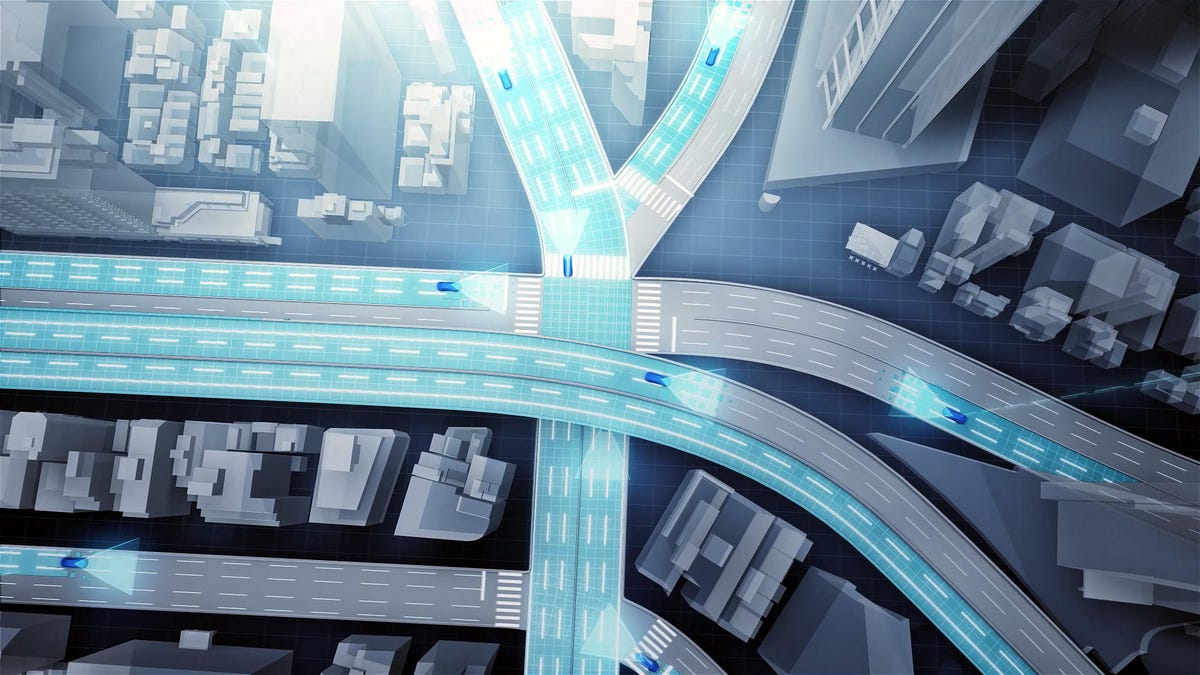BMW's plea to EU highlights 5G vs. Wi-Fi rift in future connected cars
The standards for cross-vehicle communication aren't necessarily at odds, but different companies have different ideas about how to move forward.

Currently, there are two competing-but-not-competing standards for the future of connected cars. BMW has its feet firmly on one side of the argument, and it hopes the European Commission will see its reasoning before leaning on a standard its competition prefers.
BMW, along with Vodafone and Ericsson, have sent a letter to the European Commission asking it to open a path for 5G-based communication in future connected cars, Reuters reports. The group hopes that the EU will adopt more than a single standard for connected-car communication -- or, more specifically, the group hopes the EU won't just rely on the standard that its competitors are getting behind.
The standard that BMW is talking about is most commonly referred to as cellular vehicle-to-everything (C-V2X) technology. This relies on cell phone signals to pass messages and data between vehicles, or between vehicles and local infrastructure. With the help of Qualcomm, a big proponent of C-V2X, Audi and Ford demonstrated for the first time that the technology can work between cars from different automakers. Qualcomm's C-V2X chipset is designed to work with both current 4G LTE and future 5G networks.
The road to connected cars, and eventually self-driving cars, will be paved with radio waves. (That's a metaphor, obviously; radio waves aren't solid.)
The other standard ignores cellular networks entirely. ITS-G5, otherwise known as dedicated short-range communications (DSRC), relies on the 5.9-gigahertz radio spectrum (802.11p, if you speak in IEEE standards) to send communications between vehicles and local infrastructure. Volkswagen backs DSRC for connected cars, as does Toyota , which hopes to deploy DSRC-equipped cars in the US starting in 2021.
While there might be concern about C-V2X's viability in areas with limited or no cellular reception, the technology includes a method of direct communication that still lets vehicles communicate with both infrastructure and other vehicles in the absence of a cell network.
But who's to say that future connected cars can't use both standards simultaneously, ensuring these communications reach their intended targets no matter the conditions? Qualcomm is ahead of the curve here. The company actually builds both types of systems, and it put together a little explainer to help highlight the differences and similarities.
No matter the system, both DSRC and C-V2X can bring some massive benefits to drivers. Vehicles can warn one another of tire-demolishing potholes or accidents that might snarl a commute. The infrastructure can tell a car when a light is set to turn green, or that aforementioned pothole report could be beamed directly to a public-works crew waiting for such a message. It could well change the world of driving as we know it -- so long as we make sure these types of communications can be sent and received by as many cars as possible.
Update, Nov. 15: Clarified information about C-V2X.
5G: Here's everything you need to know about this fledgling cellular tech.
Self-driving cars: Your one-stop shop for all news related to autonomous vehicles.

